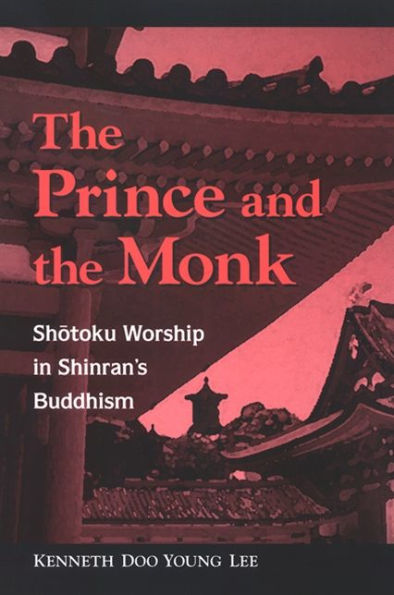The Prince and the Monk: Shotoku Worship in Shinran's Buddhism
The Prince and the Monk addresses the historical development of the political and religious myths surrounding Shōtoku Taishi and their influence on Shinran, the founder of the Jōdo-Shinshū school of Pure Land Buddhism. Shōtoku Taishi (574–622) was a prince who led the campaign to unify Japan, wrote the imperial constitution, and promoted Buddhism as a religion of peace and prosperity. Shinran's Buddhism developed centuries later during the Kamakura period, which began in the late twelfth century. Kenneth Doo Young Lee discusses Shinran's liturgical text, his dream of Shōtoku's manifestation as Kannon (the world-saving Bodhisattva of Compassion), and other relevant events during his life. In addition, this book shows that Shinran's Buddhism was consistent with honji suijaku culture—the synthesis of the Shinto and Buddhist pantheons—prevalent during the Kamakura period.
"1111929005"
The Prince and the Monk: Shotoku Worship in Shinran's Buddhism
The Prince and the Monk addresses the historical development of the political and religious myths surrounding Shōtoku Taishi and their influence on Shinran, the founder of the Jōdo-Shinshū school of Pure Land Buddhism. Shōtoku Taishi (574–622) was a prince who led the campaign to unify Japan, wrote the imperial constitution, and promoted Buddhism as a religion of peace and prosperity. Shinran's Buddhism developed centuries later during the Kamakura period, which began in the late twelfth century. Kenneth Doo Young Lee discusses Shinran's liturgical text, his dream of Shōtoku's manifestation as Kannon (the world-saving Bodhisattva of Compassion), and other relevant events during his life. In addition, this book shows that Shinran's Buddhism was consistent with honji suijaku culture—the synthesis of the Shinto and Buddhist pantheons—prevalent during the Kamakura period.
26.49
In Stock
5
1

The Prince and the Monk: Shotoku Worship in Shinran's Buddhism
242
The Prince and the Monk: Shotoku Worship in Shinran's Buddhism
242
26.49
In Stock

Product Details
| ISBN-13: | 9780791480465 |
|---|---|
| Publisher: | State University of New York Press |
| Publication date: | 02/01/2012 |
| Sold by: | Barnes & Noble |
| Format: | eBook |
| Pages: | 242 |
| File size: | 403 KB |
About the Author
From the B&N Reads Blog
